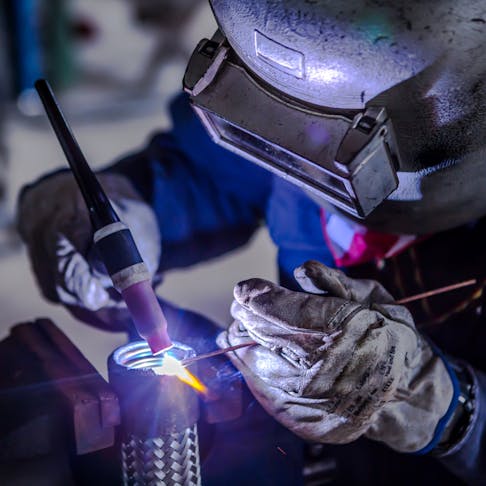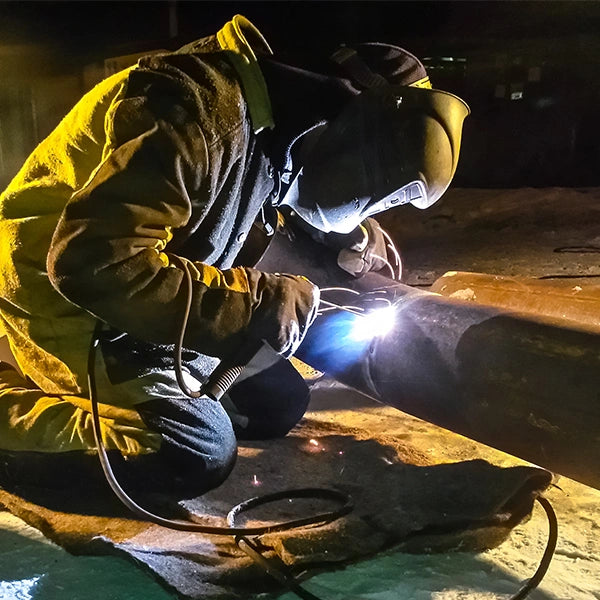Welding WPS Explained: Key Parts and Advantages for Your Welding Procedures
Wiki Article
The Ultimate Overview to Welding WPS Procedures: An Extensive Introduction for Welders
In the complex globe of welding, Welding Treatment Specs (WPS) offer as the backbone of making sure quality, uniformity, and safety in welding operations (welding WPS). As we dig right into the various parts of a WPS and discover the details of certification and accreditation, we will certainly reveal the essential duty these treatments play in the realm of welding.Relevance of WPS Procedures
Comprehending the relevance of Welding Treatment Specifications (WPS) treatments is vital for guaranteeing the quality and stability of bonded frameworks. WPS treatments offer as a roadmap for welders, laying out the required actions, parameters, and products required to achieve a sound weld. By sticking to WPS standards, welders can guarantee uniformity in their job, bring about trustworthy and structurally sound welds.One of the main reasons that WPS treatments are essential is their duty in keeping weld quality and stability. Adhering to the specified welding criteria and methods outlined in the WPS helps protect against flaws such as porosity, splitting, or insufficient combination, which can endanger the strength and sturdiness of the weld. Furthermore, WPS treatments are crucial for guaranteeing compliance with sector requirements and codes. By complying with well established WPS guidelines, welders can show that their job satisfies the needed requirements for safety and security and top quality, supplying assurance to clients, inspectors, and regulative bodies. In essence, the relevance of WPS procedures can not be overemphasized, as they are essential to attaining consistent, top notch welds that fulfill market standards and specifications.

Components of a WPS
A Welding Treatment Specification (WPS) usually comprises important components that information the specific needs for carrying out a weld, making certain consistency and top quality in the welding procedure. The key parts of a WPS consist of important variables such as base metals, filler steels, preheat and interpass temperatures, welding procedures, securing gases, welding placements, and post-weld warm treatment requirements.Base steels refer to the products being signed up with, while filler steels are used to fill the space in between the base steels during welding. The welding procedure outlines the specific strategy to be made use of, whether it's gas metal arc welding (GMAW), secured steel arc welding (SMAW), or another approach. Welding positions specify the alignments in which welding can be executed.

Credentials and Qualification
Having actually developed the essential components of a Welding Procedure Specification (WPS), the emphasis currently moves in the direction of the critical elements of credentials and certification in welding practices.
Qualification, on the various other hand, is the formal acknowledgment of a welder's certifications by a relevant certification body or organization. Welding accreditations are commonly based on the particular welding processes, products, and settings a welder is certified to collaborate with. Holding a valid welding certification demonstrates that a welder fulfills industry standards and is qualified to do welding tasks to the required specifications.
Developing a WPS
To develop description a Welding Procedure Spec (WPS) that fulfills sector requirements, careful factor to consider of welding procedures, products, and operational specifications is essential (welding WPS). The primary step in producing a WPS is to recognize the welding process to be used, such as gas metal arc welding (GMAW) or shielded steel arc welding (SMAW) Once the welding procedure is established, the next vital element is choosing the appropriate products, considering factors like base metal kind, density, and joint layout. Functional parameters such as welding present, voltage, travel speed, and protecting gas structure need to likewise be thoroughly defined in the WPS.
Carrying Out and Monitoring WPS
Upon settling the detailed Welding Procedure Requirements (WPS) that thoroughly information welding processes, products, operational specifications, and quality control procedures, the emphasis shifts to effectively carrying out and keeping an eye on the recognized treatments. Application entails making certain that all welders associated with the job recognize with the WPS and follow it thoroughly during the welding procedure. This needs giving appropriate training and supervision to assure adherence to the specified procedures. Keeping an eye on the WPS entails continual oversight to verify that welding activities straighten with the recorded specs. Evaluations, testing, see this here and quality control procedures are crucial components of the tracking process to recognize any kind of issues or discrepancies immediately. Routine audits and reviews of the welding treatments assist in maintaining consistency and quality throughout the job. Reliable implementation and surveillance of the WPS are essential for making sure the stability, strength, and safety of the bonded joints, ultimately adding to the overall success of the welding project.Final Thought
In verdict, understanding and complying with Welding Procedure Specifications (WPS) is critical for welders to guarantee quality, consistency, and security in their job. By recognizing the parts of a WPS, obtaining proper certifications and certifications, producing detailed treatments, and applying and monitoring them effectively, welders can improve their skills and efficiency in welding methods. Adhering to WPS procedures is important for creating top quality welds and meeting market criteria.
In the elaborate world of welding, Welding Treatment Specs (WPS) offer as the backbone of guaranteeing quality, consistency, and safety in welding operations. The welding process details the particular strategy to be used, whether it's gas steel arc welding (GMAW), shielded metal arc welding (SMAW), or another method.To establish a Welding Treatment Spec (WPS) that satisfies market requirements, mindful consideration of welding processes, products, and operational criteria is vital. The very first step in developing a WPS is to determine the welding procedure to be used, such as gas steel arc welding (GMAW) or protected metal arc welding (SMAW)Upon settling the detailed Welding Treatment Requirements (WPS) that thoroughly details welding processes, materials, functional parameters, and quality assurance steps, the focus moves to properly executing and keeping track of the well-known procedures.
Report this wiki page